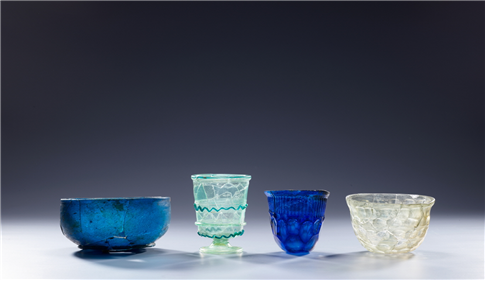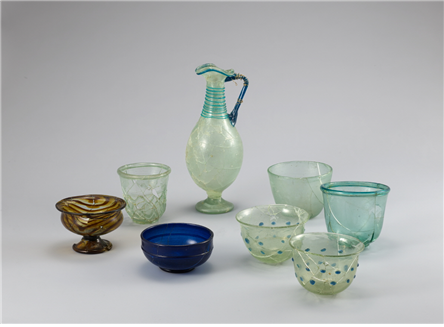
| Period| | 2020.12.08 - 2021.03.01 |
|---|---|
| Operating hours| | Tue-Sun 10:00-18:00 |
| Space| | Gyeongju National Museum |
| Address| | 186, Iljeong-ro, Gyeongju-si, Gyeongsangbuk-do, Republic of Korea |
| Closed| | January 1st, Lunar New Year's Day, Chuseok, First Monday in April and November |
| Price| | Free |
| Web site| | 홈페이지 바로가기 |
| Artist| |
|
정보수정요청



|
|
Exhibition Information




The Gyeongju National Museum will hold a special exhibition of 「Color and Radiance: Glass Treasures of Sila and Ancient Korea 」 from December 8, 2020 (Tue) to March 1, 2021 at the special exhibition hall. This special exhibition was designed to shed light on the overall flow of ancient Korean glass, focusing on glass that Silla people especially cared for and loved. It is the first large-scale exhibition featuring ancient Korean glass, showcasing 18,000 glass products ranging from the Iron Age to the Unified Silla Period. The exhibits include three national treasures and eight treasures, including a phoenix-shaped glass bottle (National Treasure No. 193) excavated from the south tomb of Hwangnamdaechong Tomb in Gyeongju. Glass, which was born in the Mediterranean region 4,500 years ago, was widely used in the Roman Empire in the 1st century BC with the development of an innovative technique called the blowing of daegong. In ancient East Asia, glass was considered a rare treasure from the West and was often described as a five-colored, shining figure. It was mainly used for accessories, and vessels were not common compared to the West. In this context, many of the glass vessels excavated from Silla's Neungmyo are very surprising and unusual examples. So far, 15 properly shaped glass bowls have been found in seven tomb tombs, especially in the case of Hwangnamdaechong. They are rare compared to glassware from other parts of the world and show colorful colors and deformities. Recent surveys have allowed specific tracking of production sites, possibly in Egypt, Syria-Palestinian regions, south of the Caucasus, and Central Asia. The glass bowl, which was introduced to Silla through an overland and sea route across Eurasia, shows the international sense of Silla, high Simmian, and special taste of Silla. In addition, the exhibition features endless variations of beads that form the mainstream of ancient glass types. In addition to the various monochromatic glass beads, glass beads, which are decorated with inlaid or gold, are described along with the method of production. We will also look at the characteristics of each country, focusing on the representative works of the Three Kingdoms Period. For example, the keywords of Baekje's colorful colors, Gaya's crystal and glass combination, and Silla's blue waves can be compared. Not only importing glass, but also it introduces evidence that glass was produced directly in Korea. Formwork found in various historical sites before and after B.C. indicates that glass beads were made using a frame, such as the method of making bronze and ironware. Glass crucible and lead glass fragments found in Ssangbuk-ri and Wanggung-ri of Buyeo and Iksan show that the technology to make glass by mixing lead with sand existed at the end of the 6th century at the latest. It also looks at the religious significance given to glass due to the introduction of Buddhism. The large amount of glass beads found in the wooden pagoda of Hwangnyongsa Temple and the three-story stone pagoda of Guhwang-dong show that glass was considered a precious jewel dedicated to Buddha. In Korea's representative works of glass sarira reliquary (National Treasure No. 123) and the Five-story Stone Pagoda sarira of Songnimsa Temple (Treasure No. 325), the special location of glass sarira reliquary used as a container for direct containment of sarira can be found inside. Research on ancient Korean glass is still ongoing. This special exhibition is expected to serve as an important opportunity to take a step closer to solving the questions surrounding ancient Korean history and glass.
